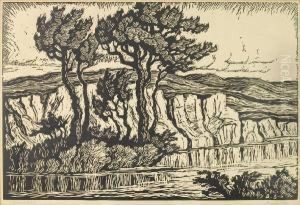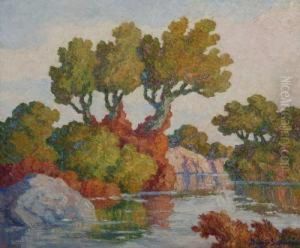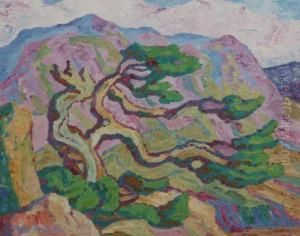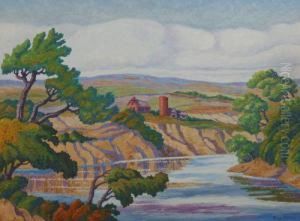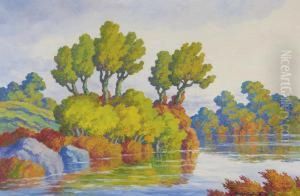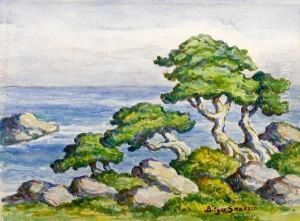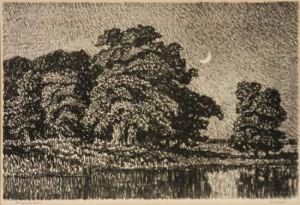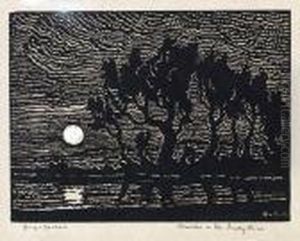Sven Birger Sandzen Paintings
Sven Birger Sandzén, known more commonly as Birger Sandzén, was a Swedish-born American painter best known for his landscapes and works that incorporated the rich colors and dramatic brushwork of post-impressionism. Born on February 5, 1871, in Blidsberg, Sweden, Sandzén showed an early interest in art and began his formal training in Stockholm before moving to Paris in 1894. There, he studied at the Académie Julian under Jean-Paul Laurens and became influenced by the modern movements of Impressionism and Post-Impressionism.
During his time in Europe, Sandzén traveled extensively, which further impacted his artistic development. He visited various art colonies in France, England, and other parts of Europe, absorbing influences that would later manifest in his work. In 1894, he immigrated to the United States and settled in Lindsborg, Kansas, where he became a central figure in the local art community. He taught at Bethany College for over 50 years, influencing generations of artists.
Sandzén's paintings are characterized by bold color palettes, vigorous brushstrokes, and a sense of the sublime in nature. He was particularly drawn to the landscapes of the American Southwest, which he visited frequently and depicted in many of his works. The mountains, canyons, and vast skies of Colorado, Utah, and New Mexico provided endless inspiration for Sandzén, and he is often associated with the art of the American West.
Despite his European training, Sandzén's style was uniquely his own, synthesizing the influences he gathered from abroad with his personal vision of the American landscape. His artwork received considerable recognition during his lifetime and he exhibited widely. Sandzén was also an accomplished printmaker, producing lithographs and block prints in addition to his paintings.
The legacy of Birger Sandzén continues to be celebrated through the Sandzén Memorial Gallery, located in Lindsborg, which houses the largest collection of his works. He passed away on June 22, 1954, in Lindsborg, leaving behind a rich body of work that continues to be admired for its vibrant interpretation of the natural world.

